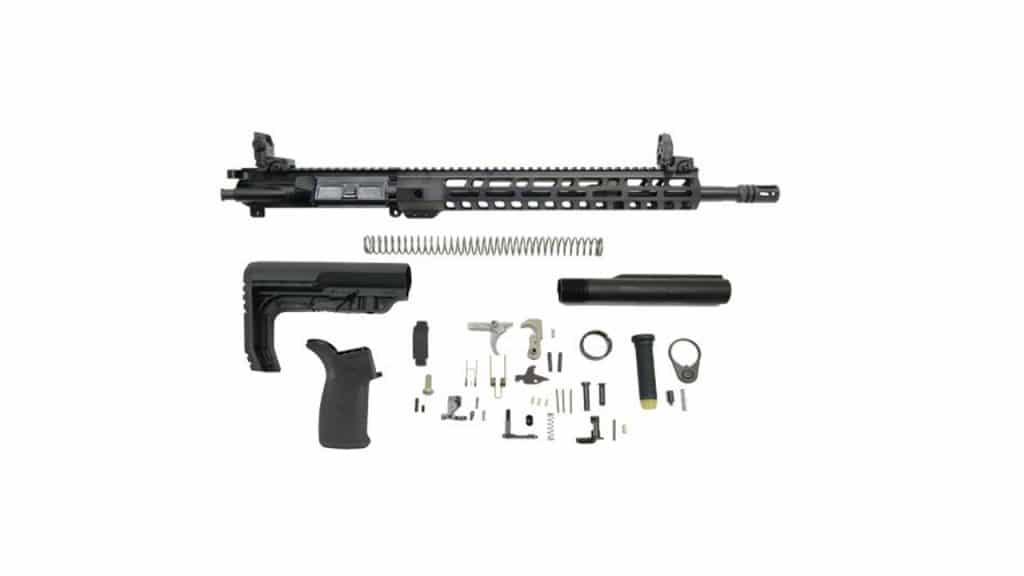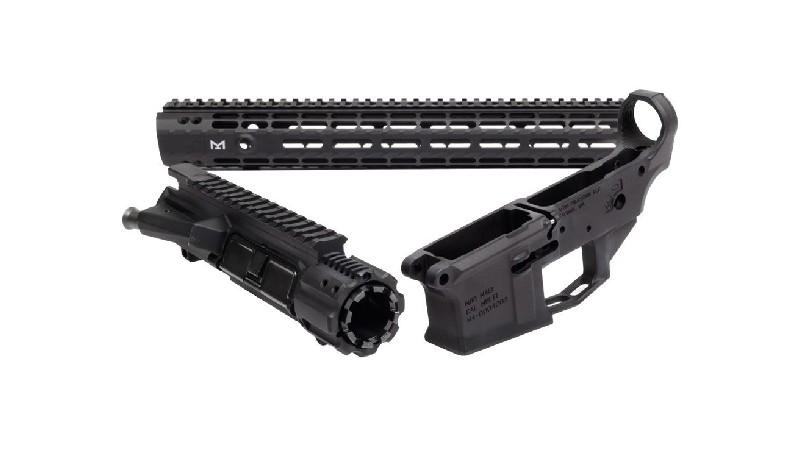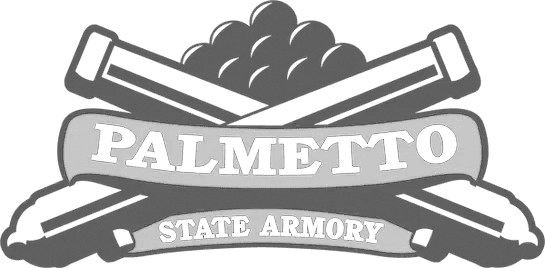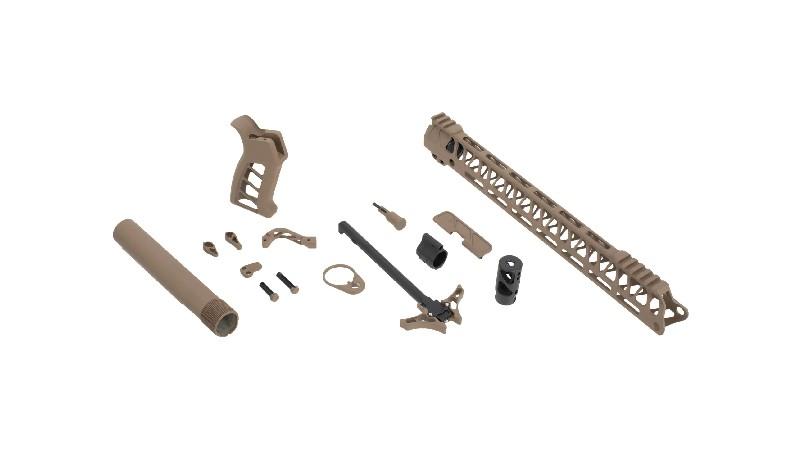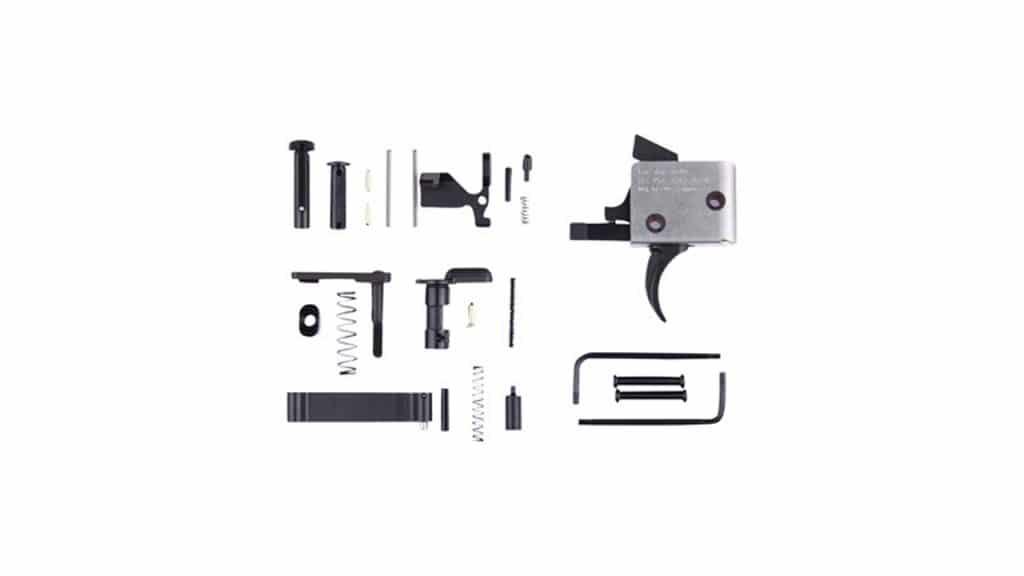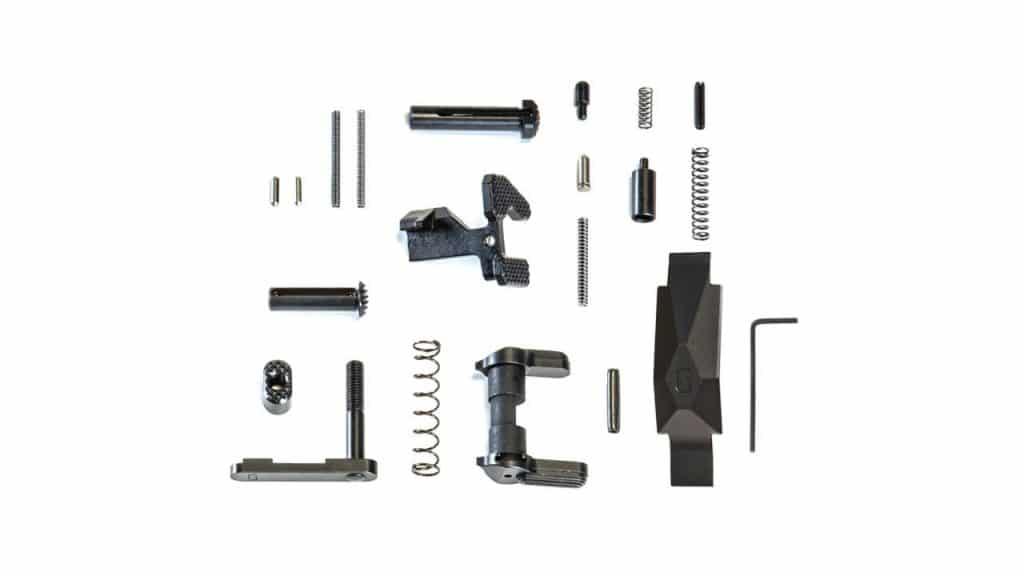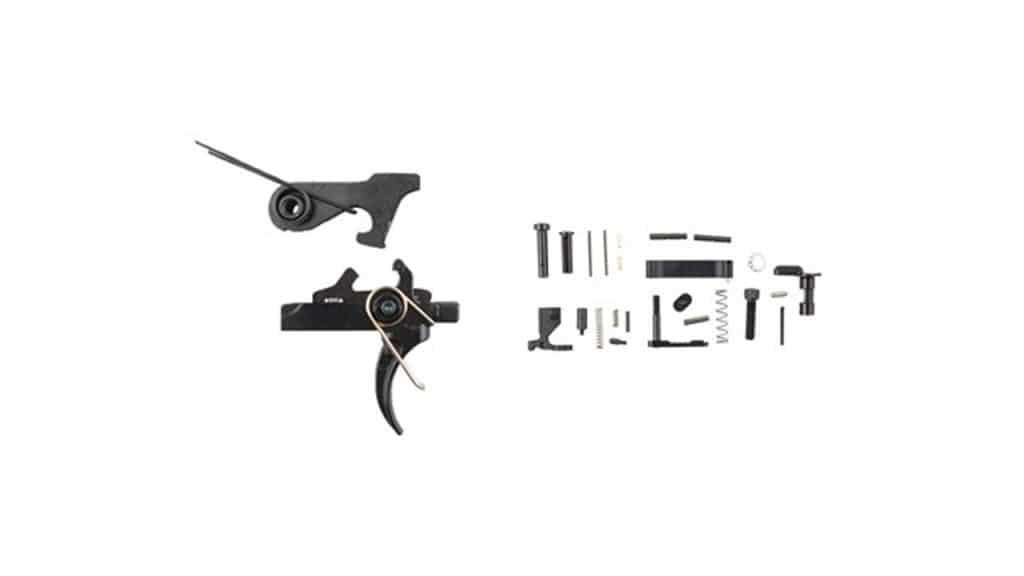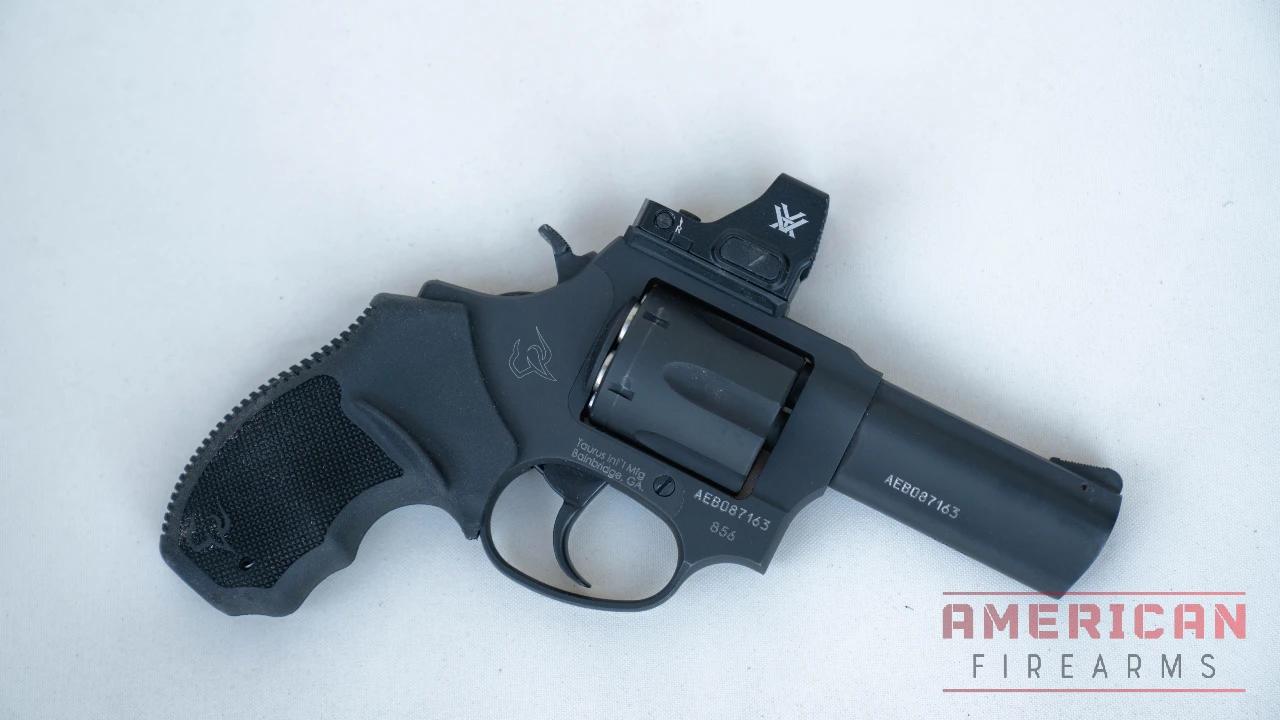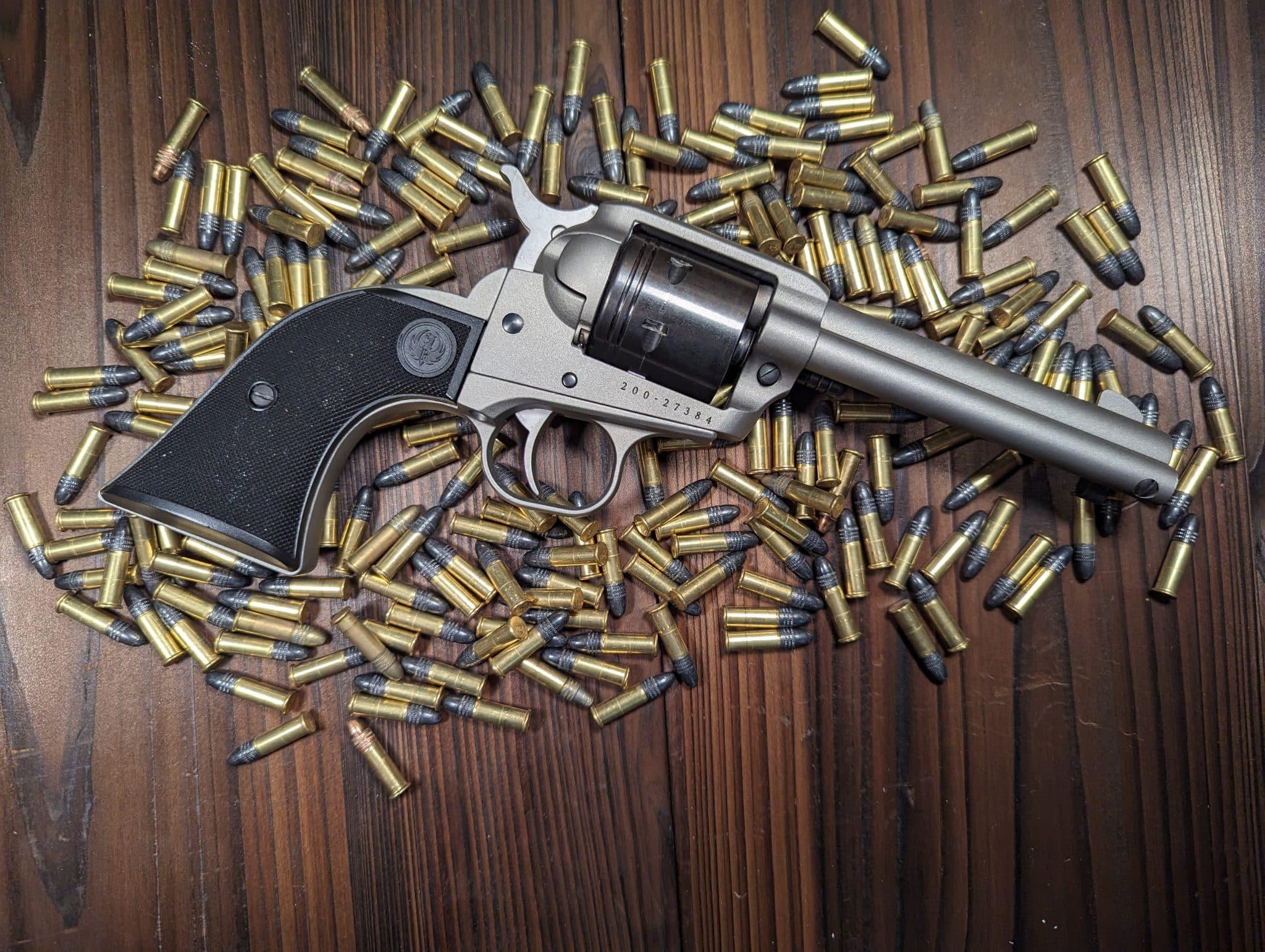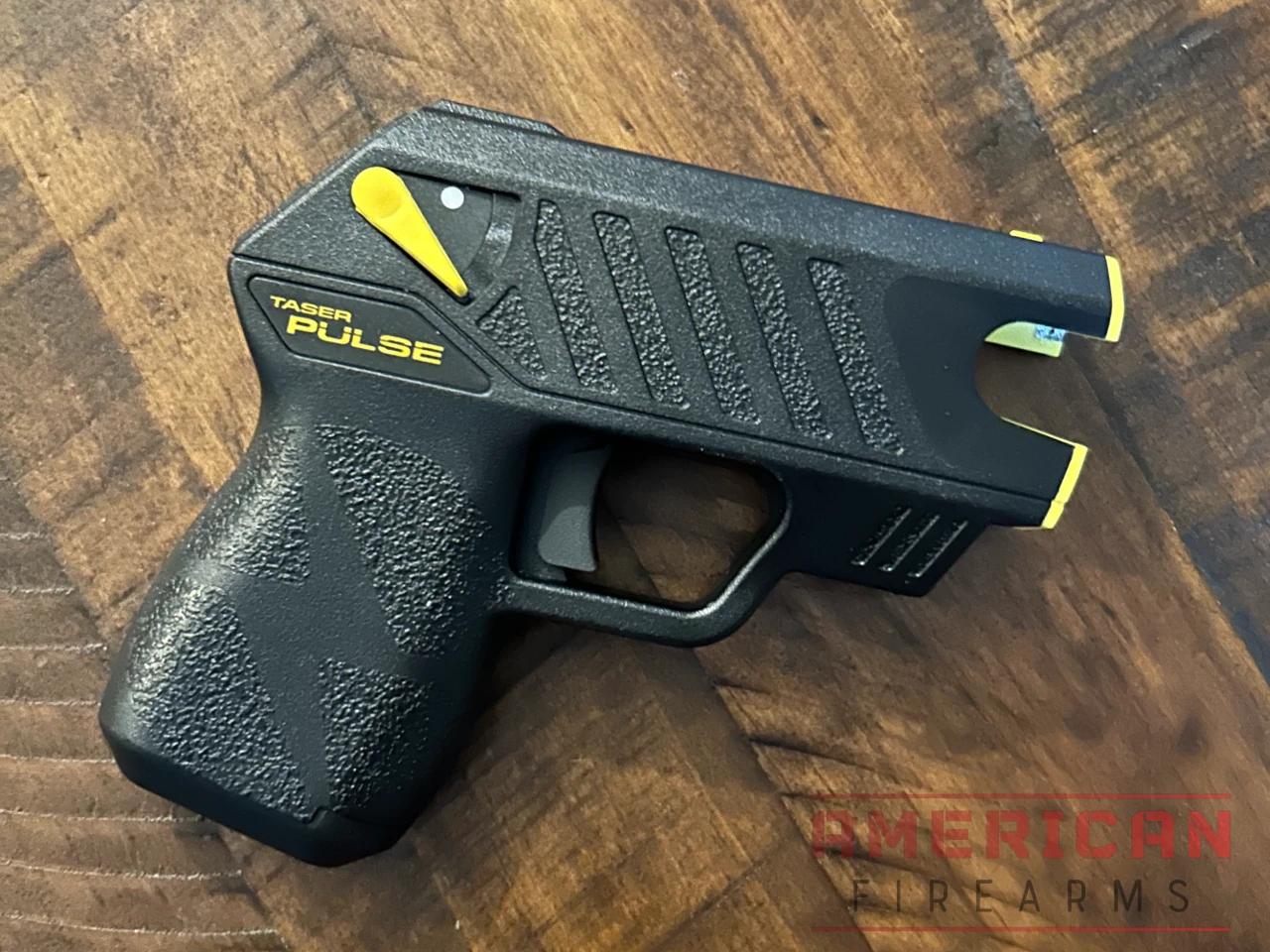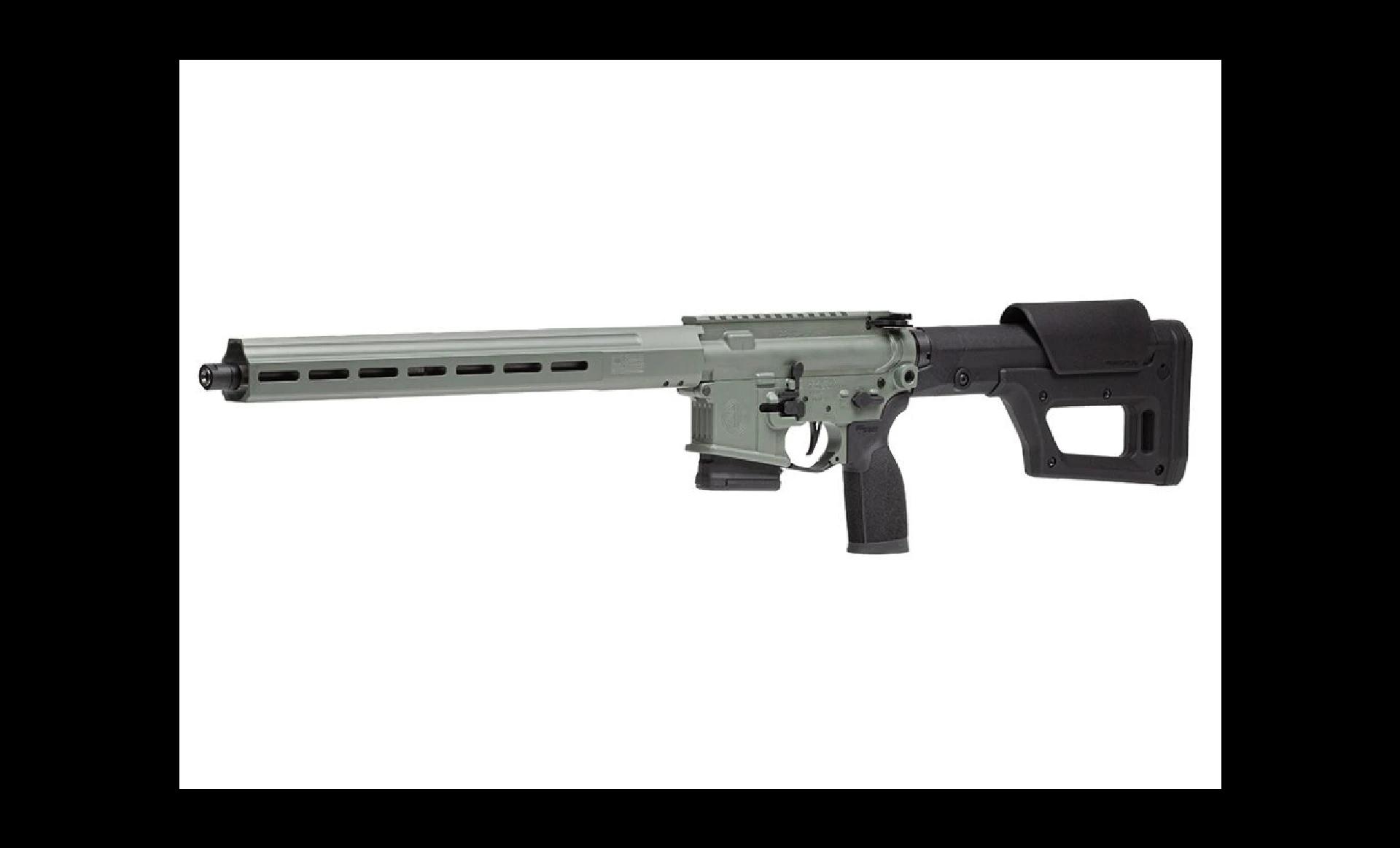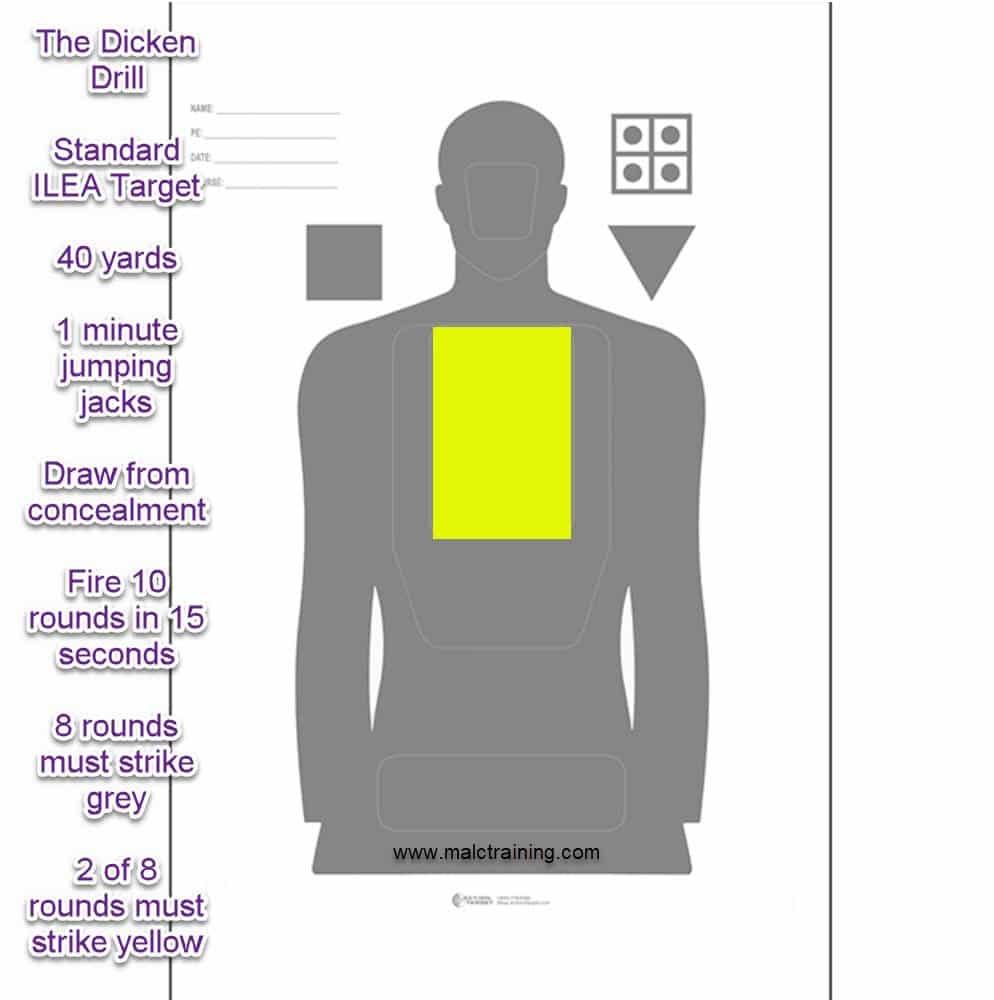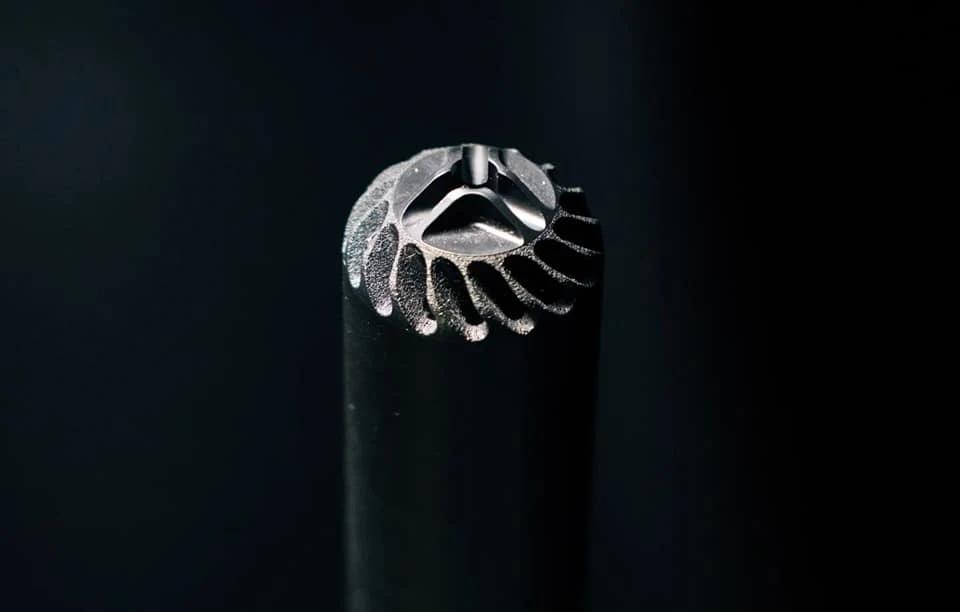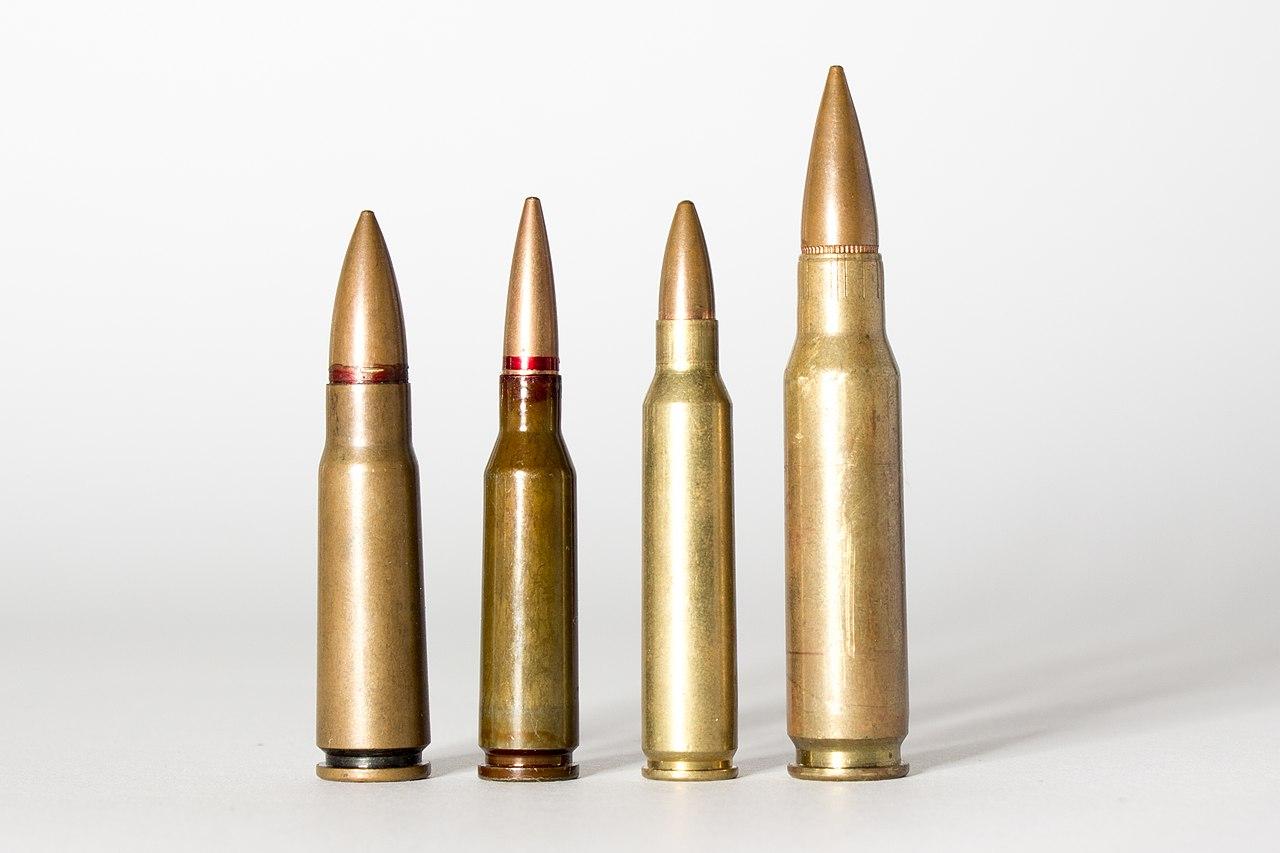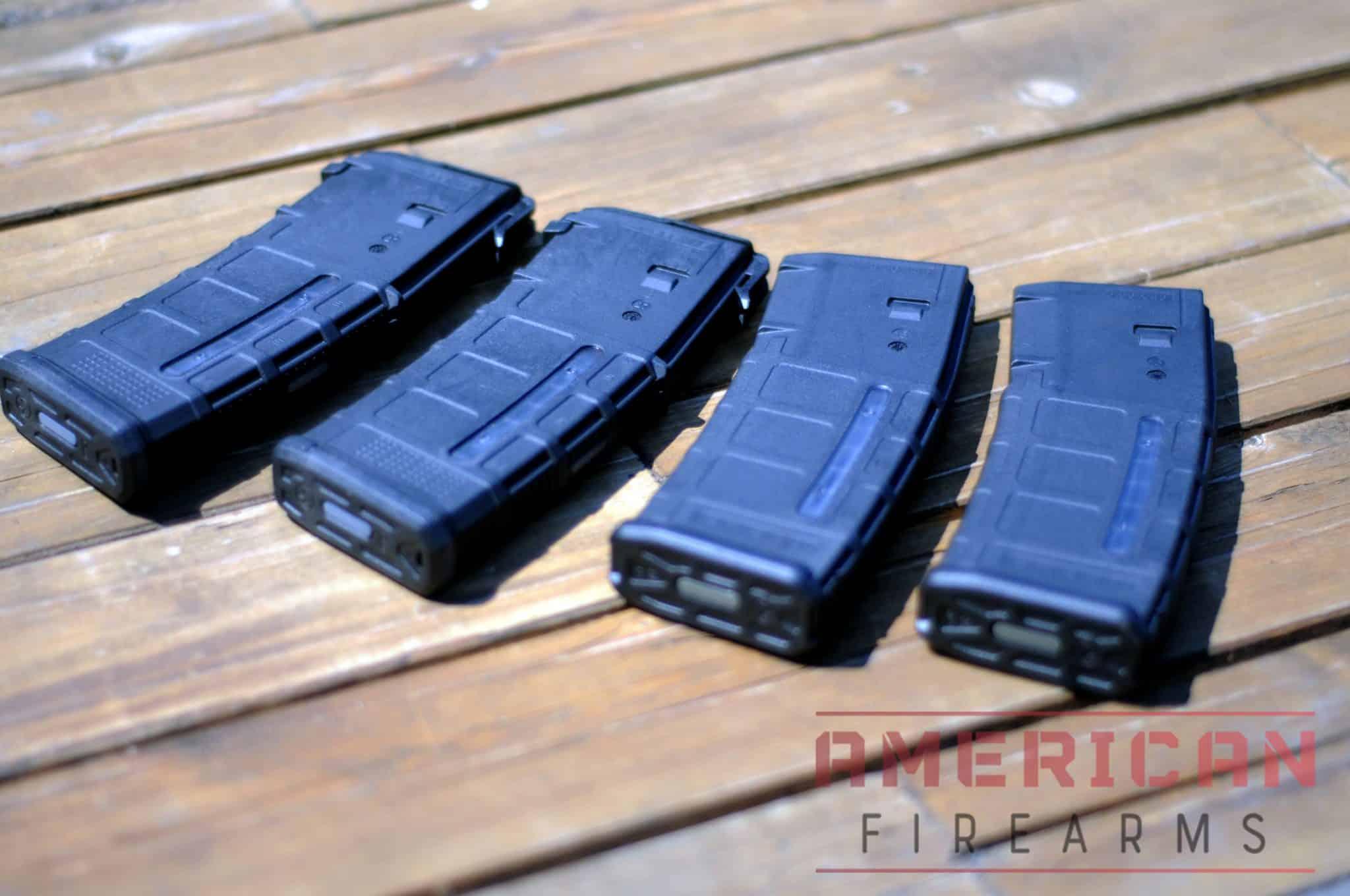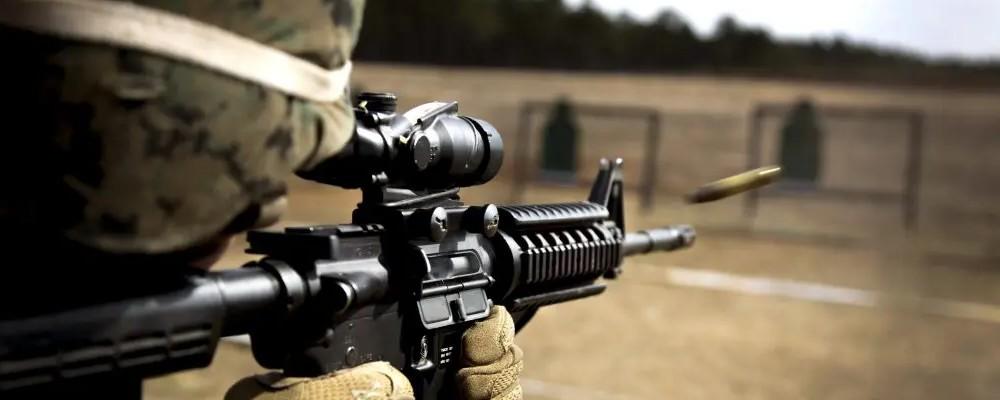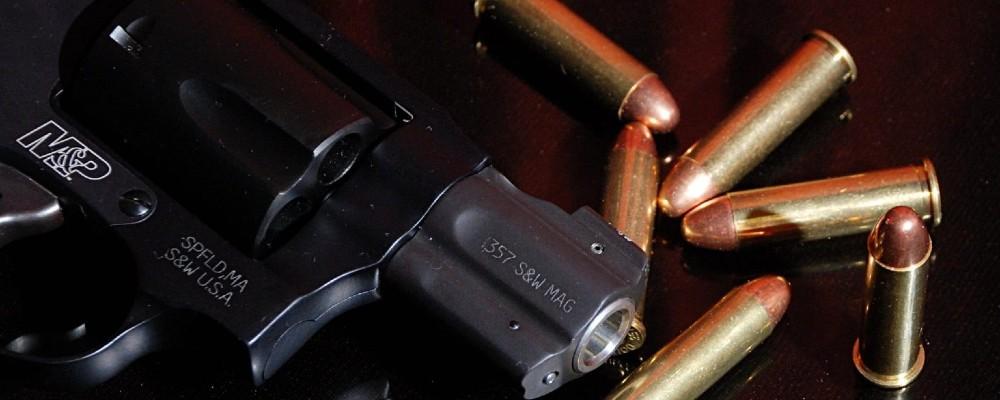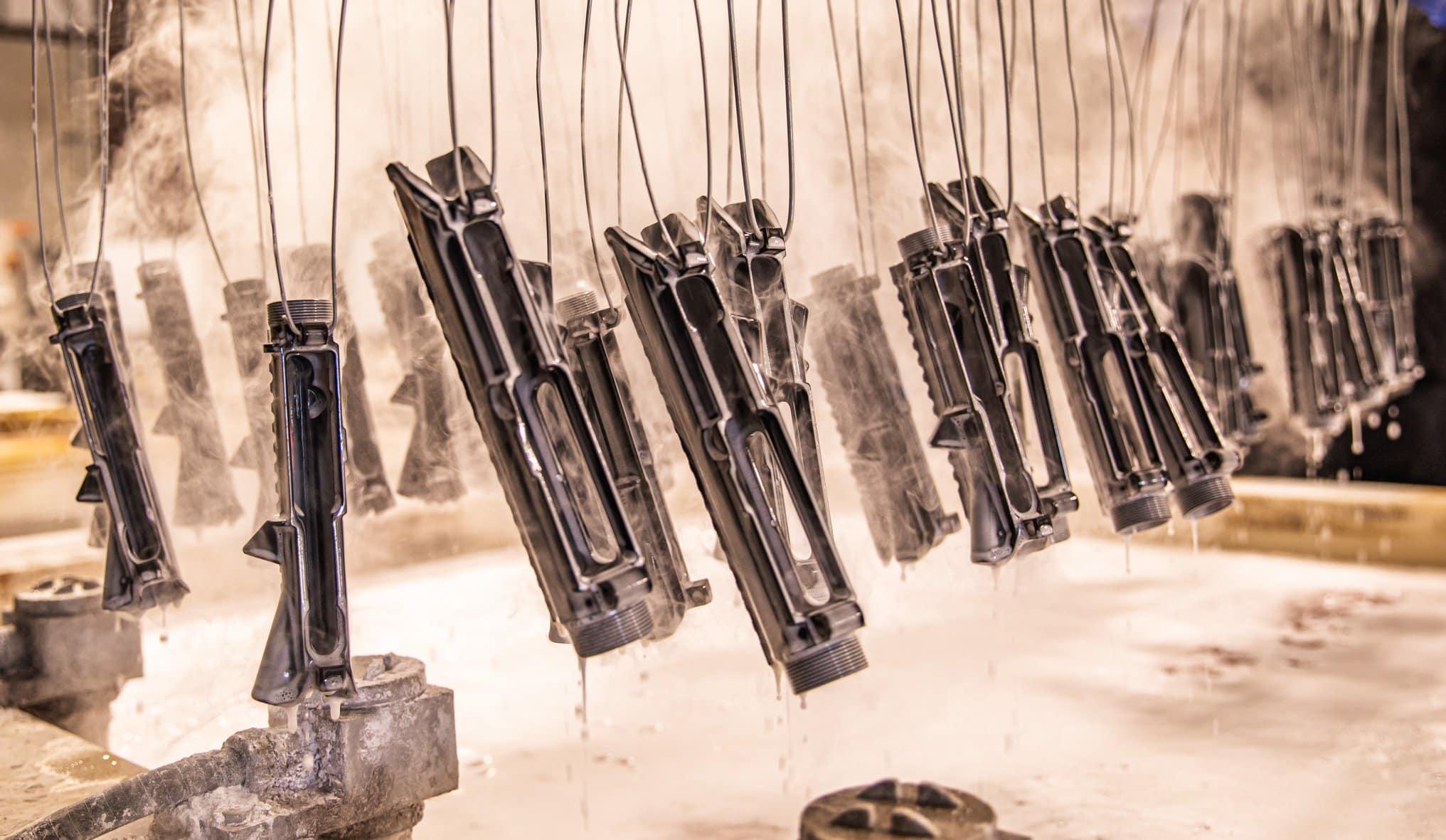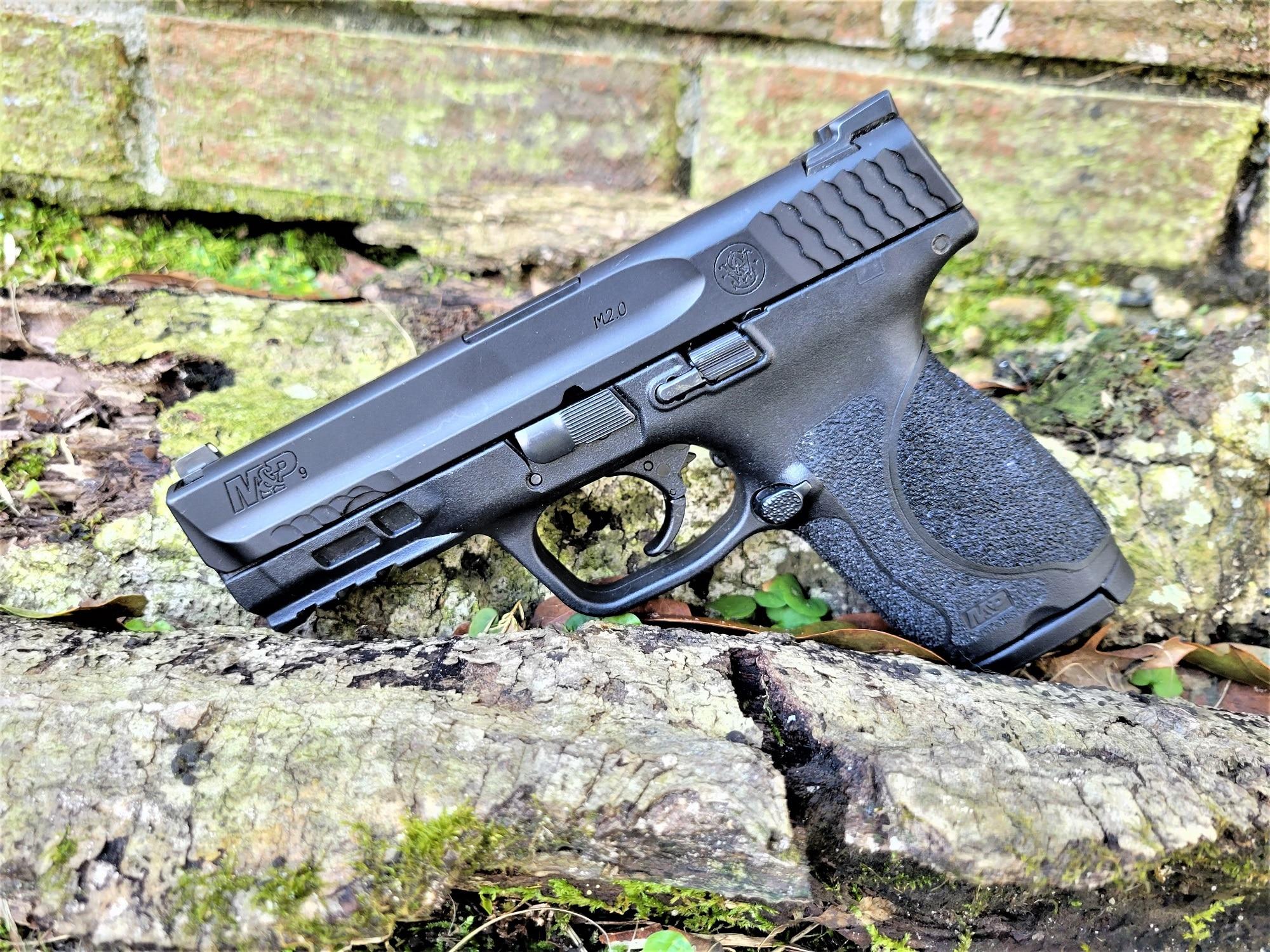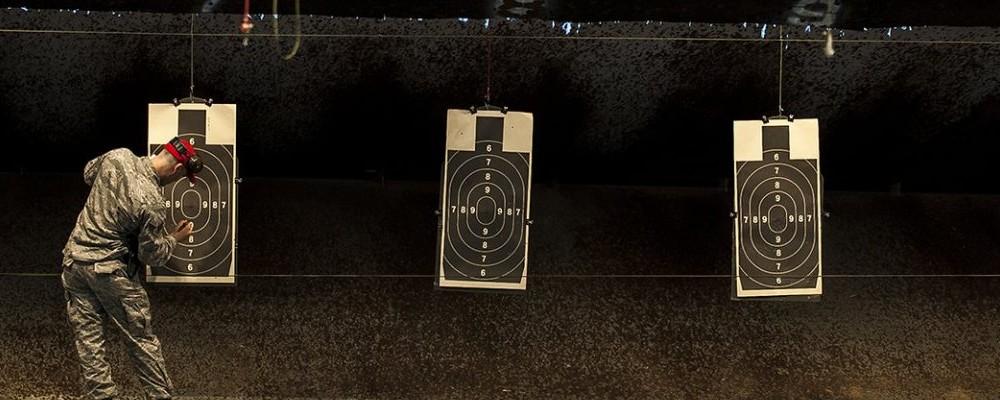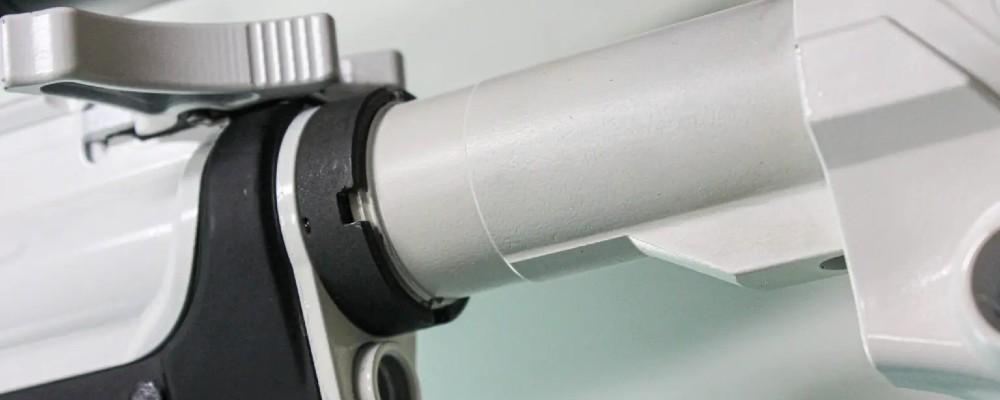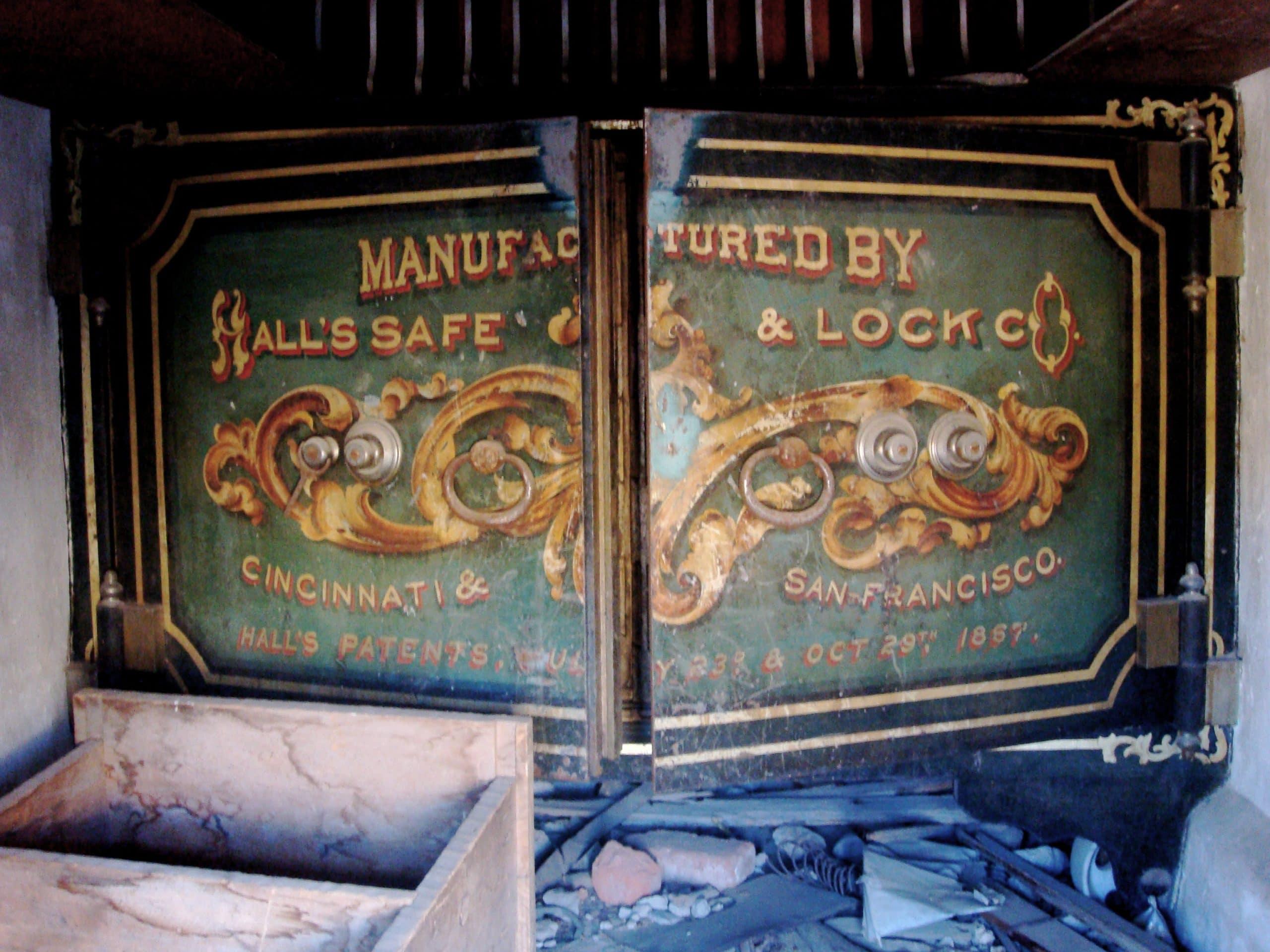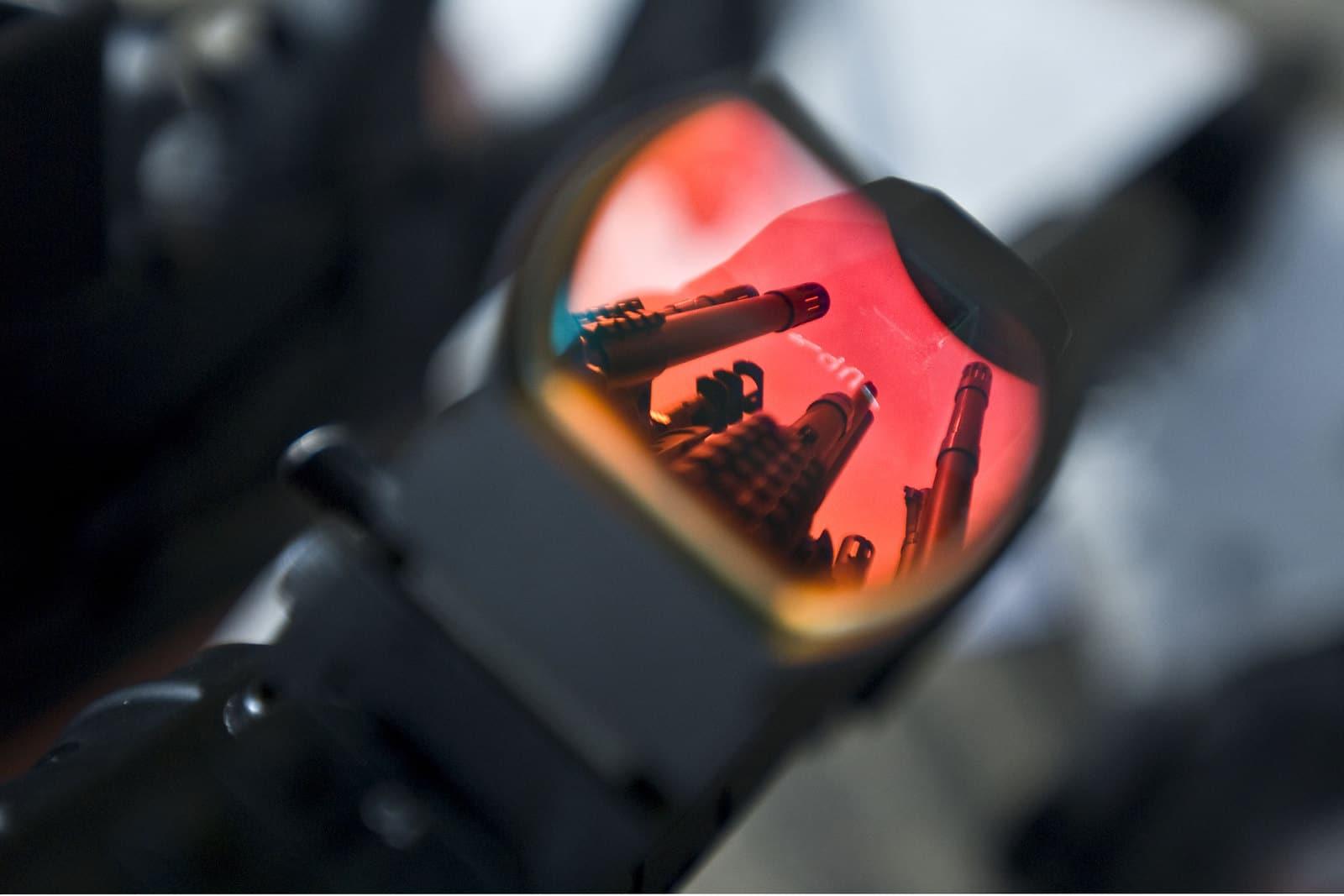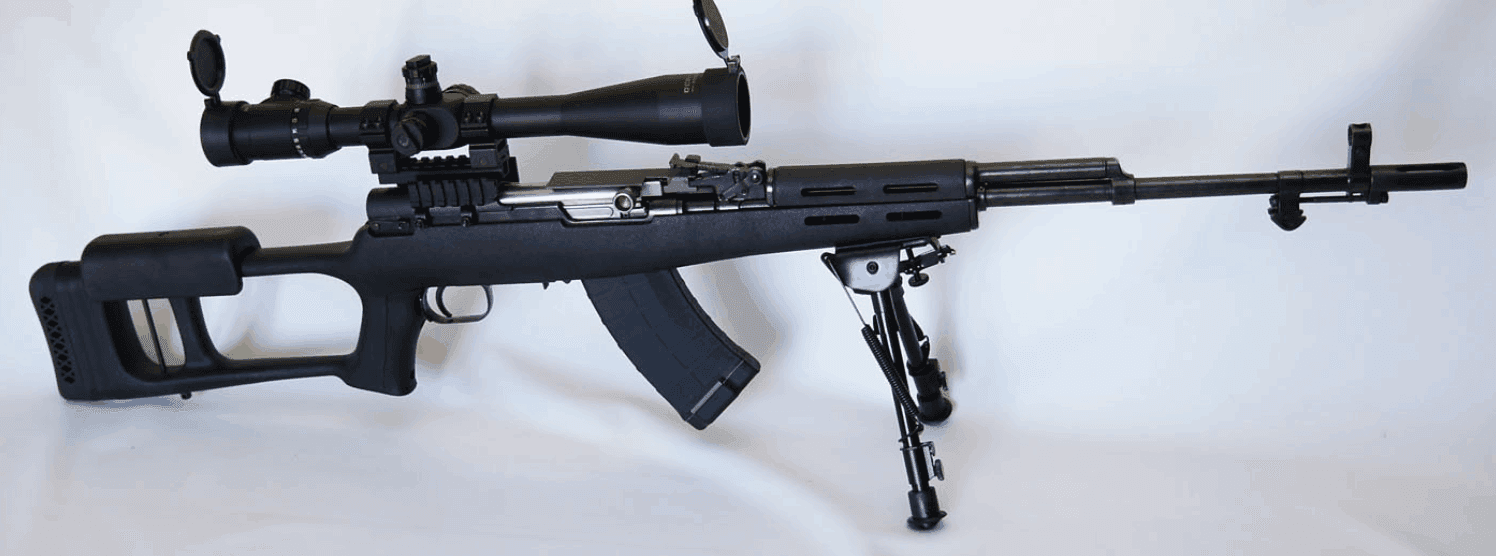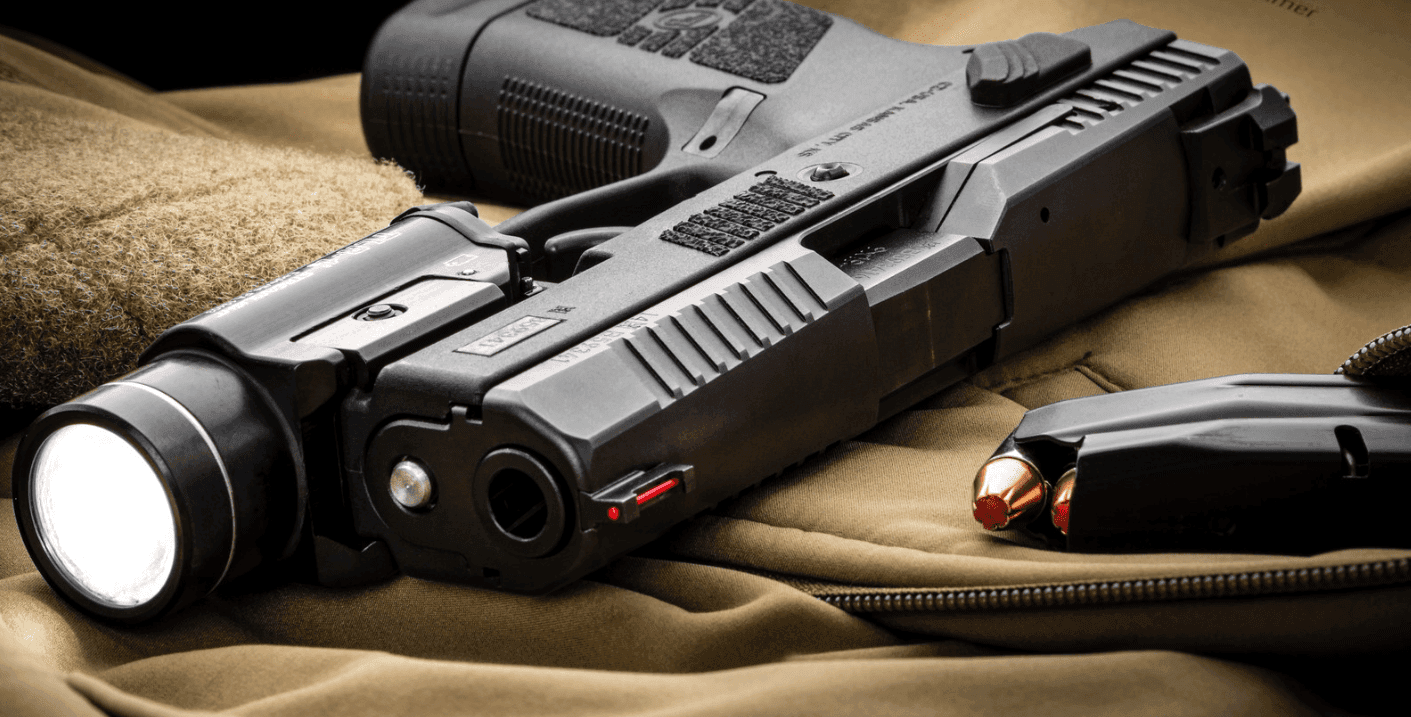Top AR-15 Build Kits For Your Next Project: From Basics to Ballistics
Thinking of assembling your own AR-15? Explore top-rated kits, essential building tips, and avoid common mistakes with our comprehensive guide.
Written By
Michael Crites
Licensed Concealed Carry Holder
Reviewed by
Editorial Team
Learn About The Editorial Team
Share:
Products are selected by our editors. We may earn a commission on purchases from a link. How we select gear.
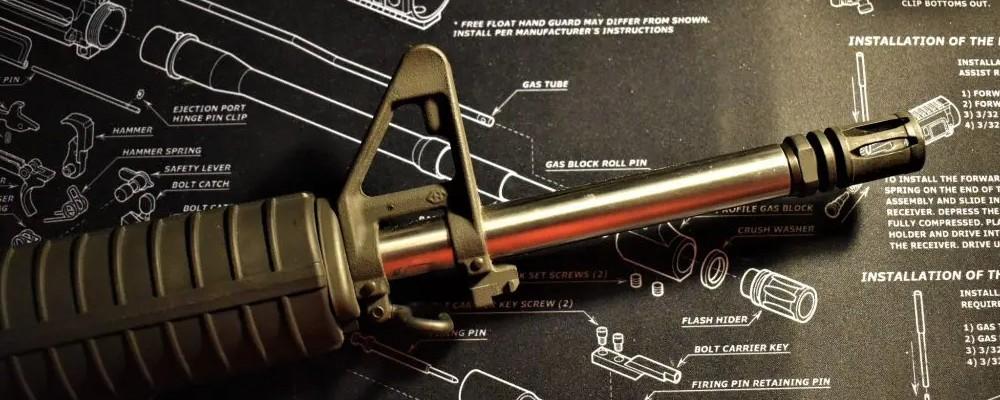
Updated
Jun 2025
There is no more daunting goalpost in the gun community than assembling or otherwise building your own AR-15, but by keeping in mind some basic considerations and doing your homework, that goal can be easily attained
This article is part of our ongoing Guide to Everything AR.
In This Article
What Are AR-15 Build Kits?
If you’ve ever wondered what all the fuss is about with AR-15 build kits, you’re not alone. These comprehensive packages have revolutionized how enthusiasts approach getting their hands on America’s rifle, and for good reason.
An AR-15 build kit is essentially everything you need to assemble a complete rifle, minus the serialized lower receiver. Think of it as an AR-15 in a box—well, almost. The beauty of build kits lies in their convenience and compatibility. Instead of sourcing individual components from different manufacturers and hoping everything plays nice together, kit manufacturers have done the heavy lifting for you.
Some folks love tinkering with firearms as much, if not more, than actually shooting them. Especially these days, a lot of us grew up playing with GI Joes, and later on, spending hours customizing digital firearms for our favorite annually-released first-person shooters. Well, you can do that customization in real life, too, and one of the best ways to do it is to build an AR-15 with a build kit.
Why Choose a Build Kit Over Complete Rifles?
The Fun of Getting Greasy
For many in the gun community, there’s more to the sport of shooting than simply buying a gun off the shelf and using it.
Some folks love tinkering with firearms as much, if not more, than actually shooting them. Especially these days, a lot of us grew up playing with GI Joes, and later on, spending hours customizing digital firearms for our favorite annually-released first-person shooters. Well, you can do that customization in real life, too, and one of the best ways to do it is to build an AR15 with a build kit.
Saving a buck (or $50)
Second, as the market for new and used ARs is more expensive than it has been in a long time, people are looking for ways to obtain high-quality parts at a good value.
One approach is to reduce labor costs by assembling the rifle yourself. Doing so not only saves you the money of paying someone to build it on a factory line, but you’ll also get the choose the parts that you want, exactly, and also you’ll pick up new skills.
Getting the parts in a kit makes the process a little more streamlined overall.
Types of AR Build Kits
| Kit Type | What's Included | Best For |
|---|---|---|
Complete Build Kits | Everything except lower receiver | First-time builders maximum convenience |
Upper Build Kits | Upper receiver barrel BCG handguard | Multiple upper builds experienced builders |
Lower Parts Kits | Trigger springs pins safety mag release | Completing stripped lowers upgrades |
Specialty Kits | Specific components (triggers furniture) | Targeted upgrades customization |
Parts Kits
One of the more common and often cheaper types of kit are the ones meant to populate a bare lower receiver.
These typically come with everything you need for a trigger, magazine catch, and bolt release, in addition to the retention pins. These simple kits are excellent for someone who has an upper ready-to-go and wants the experience of building a lower with the necessary parts or upgrading something particular about their AR.
Partial Build Kits
Second, you’ll find kits that include all of what we’d just mentioned, plus some furniture, usually the upper handguard, and you’ll sometimes find a stock included as well.
These kits are great for folks who either want to change the look and performance of an existing rifle or have a bare lower receiver and a barreled upper receiver lying around that they’d like to turn into a fully functional firearm. These kits can often be an incredible value for the money.
Complete Build Kits
You’ll find the most expensive kits have everything but the lower receiver. That is to say, they have a complete lower parts kit, some furniture, and an entire upper receiver, including the barrel, bolt carrier group, muzzle device, handguard, and maybe even some iron sights. If the upper is assembled, which it probably will be, the price on these starts to climb a little bit, but you still save on the labor of building the lower.
Luckily, these can be shipped directly to your house, thanks to the absence of a serialized lower receiver.
Trigger Kits. Finally, some kits focus on the trigger, often containing just the trigger itself and any relevant springs. These kits often feature some of the best triggers available and cater to individuals with a fully functional rifle who wish to upgrade the trigger.
Using one of these kits is a fantastic way to enhance a basic AR — tailoring its performance to your preference, especially since many individuals aren’t fond of the mil-spec triggers common in most ARs today.
Legal Considerations & FFL Requirements
Before you start dreaming about your perfect build, let’s talk about the legal stuff—because nobody wants a visit from the alphabet boys over a simple misunderstanding. The good news is that AR-15 build kits are generally pretty straightforward from a legal standpoint, but there are some important details you need to understand.
What Requires an FFL Transfer
Here’s the deal: only the lower receiver is considered a “firearm” under federal law. That serialized piece of aluminum is what makes your AR-15 legally a gun. Everything else in your build kit—the upper receiver, barrel, bolt carrier group, trigger, stock, handguard, and all the other parts—can be shipped directly to your door without any background checks or paperwork.
| Component | FFL Required? | Can Ship to Home? |
|---|---|---|
Lower Receiver | ✅ Yes | ❌ No |
Upper Receiver | ❌ No | ✅ Yes |
Barrel | ❌ No | ✅ Yes |
Bolt Carrier Group | ❌ No | ✅ Yes |
All Other Kit Parts | ❌ No | ✅ Yes |
This is actually one of the biggest advantages of build kits—you can order everything except the lower receiver online and have it delivered to your doorstep. Then you just need to visit your local FFL dealer once to pick up the lower receiver after completing the background check.
State-Specific Considerations
Federal law is just the starting point. Some states have their own restrictions that can significantly impact your build:
| State Type | Common Restrictions |
|---|---|
Restricted States | Feature bans magazine limits registration |
Restricted States | Feature bans magazine limits registration |
Ban States | Prohibited entirely or heavily restrictedRetryClaude can make mistakes. Please double-check responses. |
States like California, New York, Connecticut, and others have specific feature restrictions, magazine capacity limits, or outright bans on certain configurations. Before ordering any kit, verify your state and local laws. What’s perfectly legal in Texas might land you in hot water in California.
80% Lowers: Proceed with Caution
You’ve probably heard about 80% lower receivers—unfinished receivers that you complete yourself. While these were popular for a while, the legal landscape has become much more complex. The ATF has issued new guidance that significantly restricts these, and some states have banned them entirely. Unless you’re absolutely certain about current federal and state regulations, stick with traditional stripped lower receivers purchased through an FFL.
Assembly Location Matters
You can legally assemble your rifle in any state where you can legally possess it. However, if you’re planning to travel with your completed build, research the laws in any states you’ll be passing through. Some states have restrictions on “assault weapons” or specific features that could make your legal home-state rifle illegal elsewhere.
Building an AR-15 should be fun, not stressful. Understanding these legal basics upfront means you can focus on the exciting part—putting together your perfect rifle.
Essential Tools for AR-15 Assembly
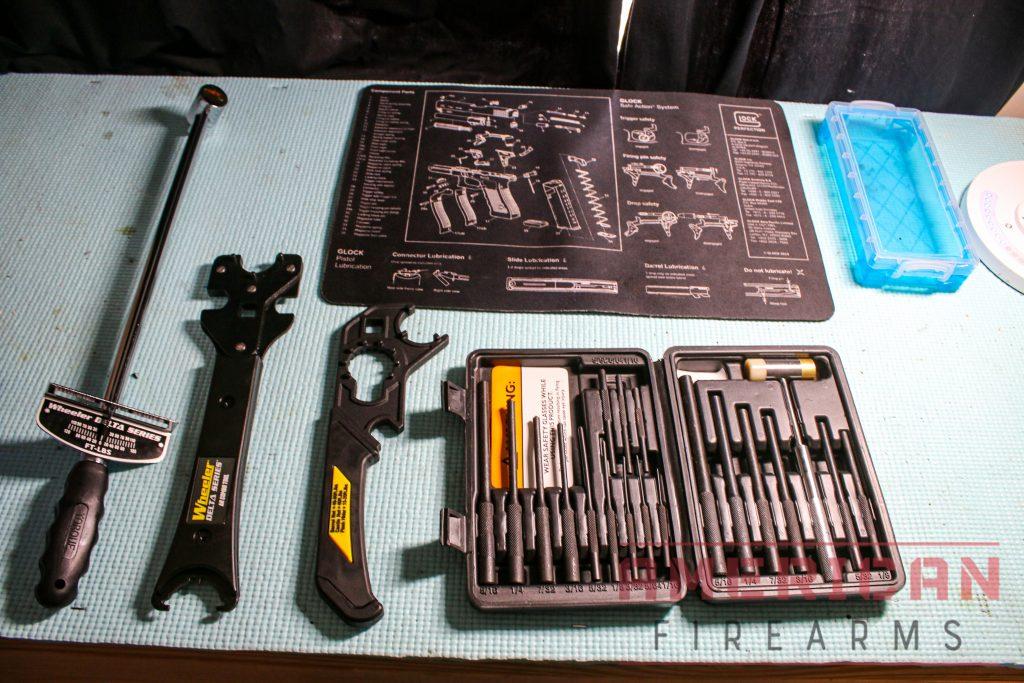
Let’s be honest—you could probably assemble an AR-15 with a hammer, a screwdriver, and a lot of determination. But unless you enjoy frustrated cursing and dinged-up parts, investing in the right tools will make your build experience infinitely better.
| Tool | Why You Need It | Price Range |
|---|---|---|
Armorer's Wrench | Barrel nut buffer tube muzzle device | $25-60 |
Roll Pin Punch Set | Installing trigger guard pivot pins | $15-35 |
Torque Wrench | Proper barrel nut tension (30-80 ft-lbs) | $40-100 |
Bench Vise | Holds receivers securely during assembly | $50-150 |
Upper/Lower Receiver Blocks | Protects finish prevents damage | $30-60 |
The armorer’s wrench is your best friend—it handles castle nuts, barrel nuts, and muzzle devices. Don’t cheap out here; a quality wrench will last through dozens of builds and won’t round off critical components.
Roll pin punches are essential for those tiny, spring-loaded pins that love to launch across the garage. Get a set with different sizes, and your knuckles will thank you.
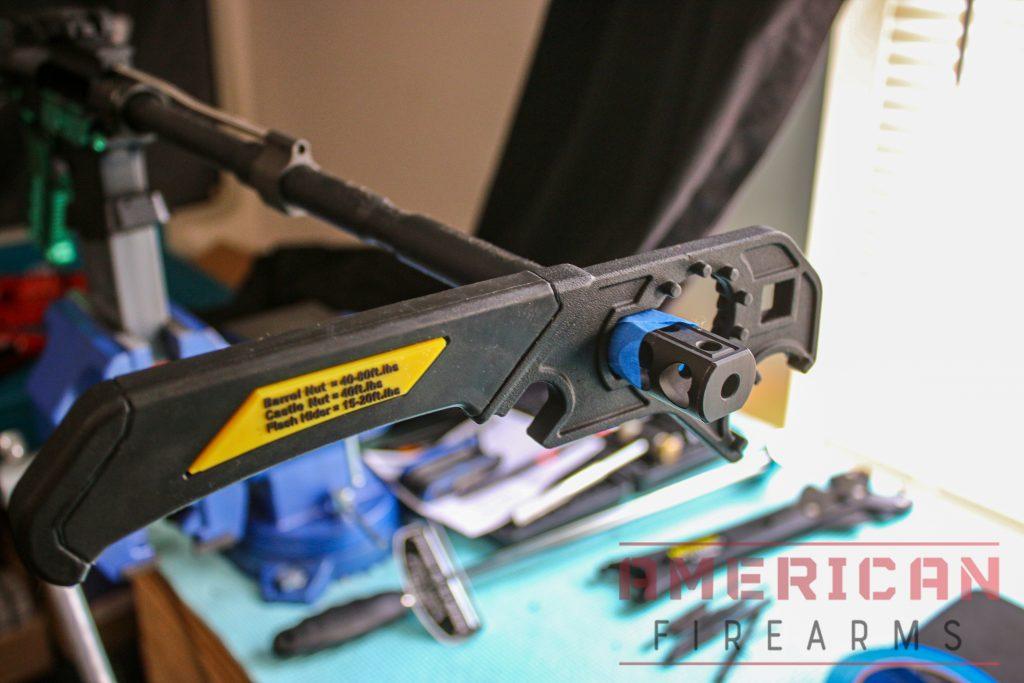
Nice-to-Have Tools
A pivot pin installation tool is worth its weight in gold for installing those stubborn takedown pins. A soft-face mallet prevents marring, and blue thread locker keeps things properly secured. Investing in tools like a bench block, a small table vice, hammers (preferably nylon and brass), anti-seize compound/grease, clevis pins, and go/no-go gauges might seem overwhelming initially.
However, these tools will prove cost-effective if you undertake multiple builds over the years. Gunsmithing tools do not have an expiration date.
Check with your local gun store as, if they have a smith on staff, they often run build classes for a nominal fee if you bring your parts and will help with tips, tricks, and the loan of some of the more rarely used tools. Expect to do all your own work, however.
Pro Tips
Set up in good lighting—preferably with a magnetic parts tray to catch those tiny springs and detents that have a mind of their own. Work over a towel or carpet to prevent parts from bouncing into the void when (not if) you drop them.
Many tool manufacturers offer complete AR-15 build kits that include everything you need. Real Avid, Wheeler, and Midwest Industries all make solid options that’ll get you through multiple builds without breaking the bank.
The bottom line? Good tools make the difference between a frustrating afternoon and an enjoyable build experience. Your first successful assembly will more than justify the investment.
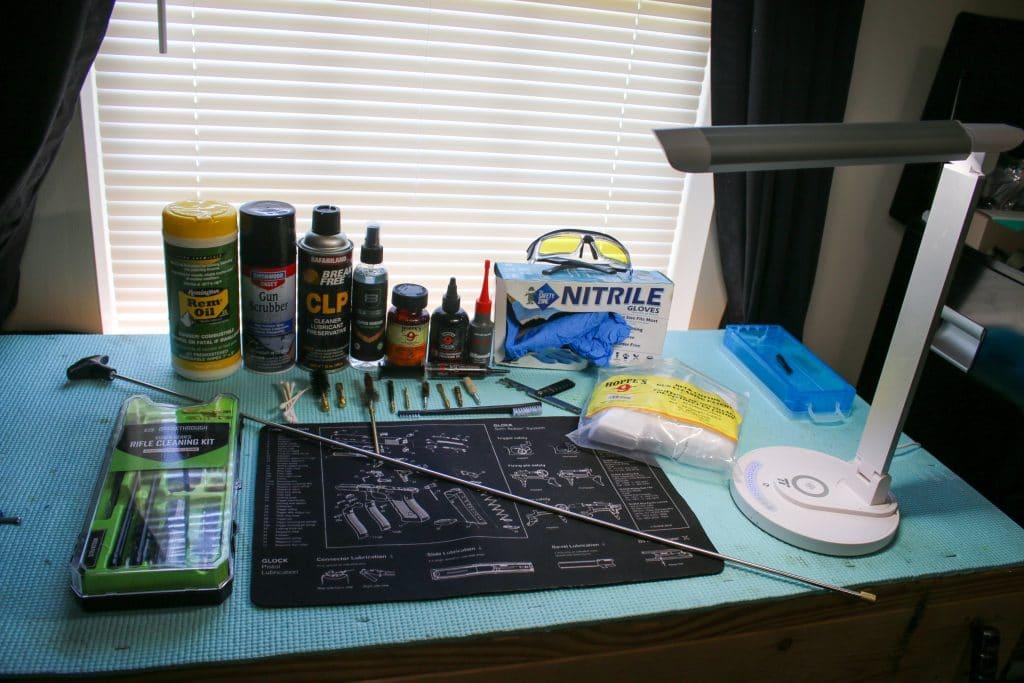
Side By Side Comparison
| Name | Selection | Price |
|---|---|---|
Best Complete Build Kit | $499 | |
Best Builder Set | $399 | |
Best LPK | $199 | |
Best Custom Build Kit | $599 | |
Best Trigger Kit | $249 | |
Best Small Parts Kit | $129 | |
Trigger Runner-Up | $199 | |
Best 2-Stage Trigger | $199 |
AR-15 Build Kits Reviewed
1. Best Complete Build Kit: PSA
Pros
- Lots of options
- Great inventory
- Solid price point
Cons
- Non-ambi controls
- So-so trigger
Palmetto State Armory at any given time has a dozen or more AR-15 kits up for grabs in pistol and rifle format. One of the best bangs for the buck is their Lightweight M-LOK kit which includes a nitride treated 15-inch 4150V chrome-moly steel barrel, chambered in 5.56 NATO, with a 1:7 twist, M4 barrel extension, and a carbine-length gas system.
As it includes PSA’s Classic Freedom Lower Build Kit along with a full-auto profile BCG with a 9310 bolt, all you need is a lower and the time to build it up. In short, this is as close to an AR-15 in a box as you can get.
2. Best Builder Set: Aero Precision
Pros
- Solidly built
- Includes all major components
Cons
- No LPK
- No Barrel
A household name in the AR receiver game, Aero Precision can set the home builder up with both an assembled upper — with forward assist and dust cover installed — and a stripped lower combo set that won’t break the bank.
We recommend their M4E1 Builder Set which just needs a BCG, barrel, and LPKto finish out.
It comes standard with a nylon-tipped tensioning set screw in the grip tang of the lower to aid in fitment between the receivers and M4 feed ramps.
3. Best Lower Parts Kit: Brownells
Pros
- Always in stock
- Made in the USA
- Mil-spec, easy installation
- Brownells Quality
Cons
- Rapid fire trigger suffers at distance performance
Bravo Company has dozens of upper receiver groups running from short 9- and 10.5-inch pistol uppers to 20-inch rifle models in a variety of calibers.
About the most-feature rich of these is their Kyle Defoor KD4 series uppers with SS410 barrels, ideal for use with 77-grain pills.
4. Best Custom Kit: Timber Creek
Pros
- Ambi safety
- Loads of colors
- Fantastic charging handle
- No FFL required
Cons
- Expensive
- No Lower
- No Upper or Barrel
Timer Creek Outdoors is one of the fastest-growing black rifle accessory makers in the country, and for good reason– they are good at what they do and make a quality product that performs with lots of custom options.
Their build kits include touches that take the performance of most rifles to the next level — including an oversize charging handle, extended mag release, and quality M-Lok handguard — often in colors designed to really make your rifle your own.
5. Best Trigger: CMC
Pros
- Fantastic trigger
- Simple installation
- CMC quality
- Looks great
Cons
- 3lb pull weight can hamper distance shooting
Texas-based CMC is primarily known for their excellent drop-in trigger packs; however, they also pair their 3.5-pound single-stage flat and curved triggers with a complete lower receiver parts kit. This pairs well with the company’s enhanced buffer set.
6. Best Small Parts Kit: Geissele
Pros
- Superior trigger
- Straightforward installation
Cons
- Easy to lose parts
- Expensive
- Often backordered
Pennsylvania-based Geissele is well-known in the AR-15 market even if they have gained something of a reputation of being a bit on the expensive side.
The good news is that their Super Duty and Ultra Duty lower parts kits are affordable and offer a great value. Add one of their buffer tube setson a stripped lower plus a grip and mag and you are ready to finish it out with the upper of your choice.
7. AR Trigger Runner-up: Geissele SRF- Brownells
Pros
- Great value
- Always available
Cons
- Fitting may be required
- Mag catch can have fit problems
- QC issues
For roughly the cost of one of Geissele’s SD or UD kits, Brownells offers a lower parts kit paired with one of Geissele’s glass-smooth and fast-shooting Rapid-Fire Triggers, which can be tuned in either 3.2- or 4-pounds by swapping out the included trigger springs.
While the Rapid-Fire Trigger pulls like a single-stage, it resets like a two-stage, making it ideal for many better builds.
8. Best Two-Stage Trigger Kit: Geissele + Brownells
Pros
- Top notch trigger
- Simple installation
Cons
- Some pieces may need to be deburred
Suppliers of high-end precision-driven AR platforms to the British military and others, LMT Defense offers both a complete lower parts kit that includes their two-stage trigger group and what they bill as their “Light” kit that comes sans trigger group to allow builders to make that personal decision themselves while still having LMT internals in their lower.
What is a build kit anyway?
In short, unlike a complete rifle or pistol, AR-15 build kits are more on the component side of things, with varying degrees of “some assembly required” to finish the gun into a range-ready firearm.
These range from joining up a complete lower to a complete upper and adding a magazine and lube– possibly the easiest level– to building an AR from the ground up. Then, of course, there is everything in between.
Of Uppers and Lowers
For those who skipped AR-15 101, the platform is comprised of not one receiver as on most firearms, but two: an upper and lower.
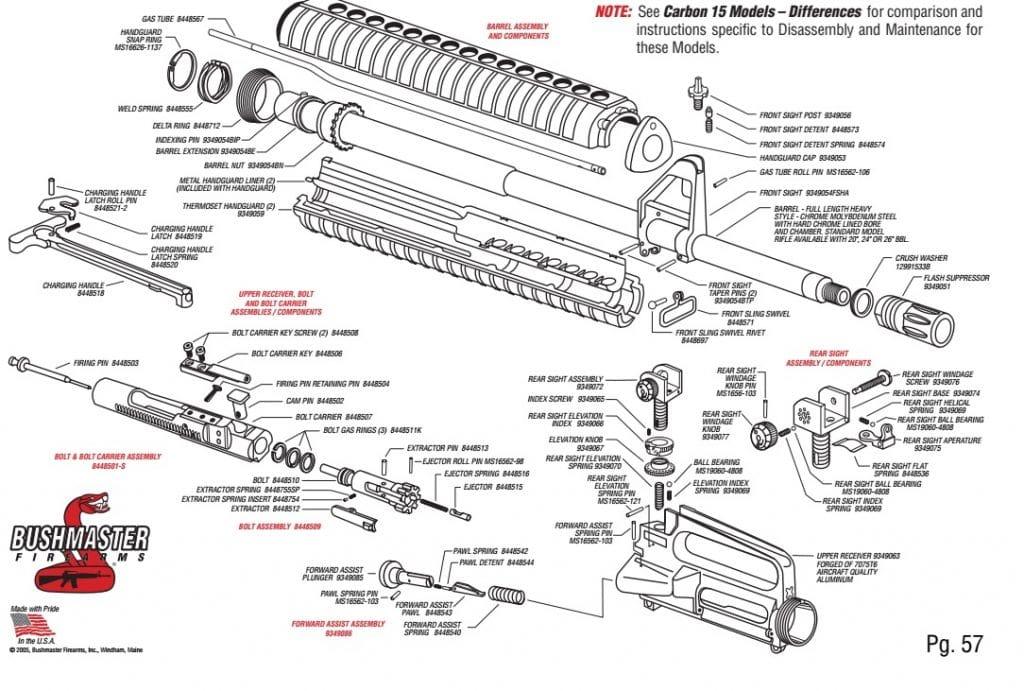
Only one of these, the lower, is serialized and therefore considered a controlled item by ATF. Each can be purchased “stripped,” which requires further building out, or complete, which only requires final match up to be ready to roll.
Keep in mind there will typically be some minor “play” between uppers and lowers, especially if you select them from two different manufacturers, a factor that can be alleviated by picking up a set of matched lowers which have been machined to tight corresponding tolerances to eliminate the “slop.”
Upper receivers can be challenging. By far, a barreled upper is an easier learning curve to work with, especially for those who are on their first build and allow the builder to avoid having to pick up a torque wrench and reaction rod.
Also, with the barrel already installed right out of the box by a reputable firm, it alleviates the worrisome question of having the correct headspace in the chamber. While starting with a stripped upper is more of a heavy lift for inexperienced builders, it does allow much more customization when it comes to barrel choice.
When it comes to lowers, forged 7075/76 aluminum lowers advertised as “mil-spec” should be the baseline for a build, while a lower parts kit, buffer tube, and stock/brace are not an overly complex task to install correctly. There are any number of helpful (free) videos out there to walk you through it — and we have a complete visual guide on assembling an AR if you’re so inclined.
As a tip, threaded trigger guards are great as they keep you from having to drive a roll pin through that somewhat easy-to-break ear with a hammer. Likewise, when you install the buffer tube and receiver extension, be sure to apply a serious stake to the castle nut to avoid having it unwind with vibration while in use, which is a bummer.
Buyers Guide
These days, many AR owners typically begin their pursuit of the ArmaLite-style rifle by acquiring one or two complete guns then balancing out their collection with at least one or two personally assembled guns from kits and taking it from there in either direction.
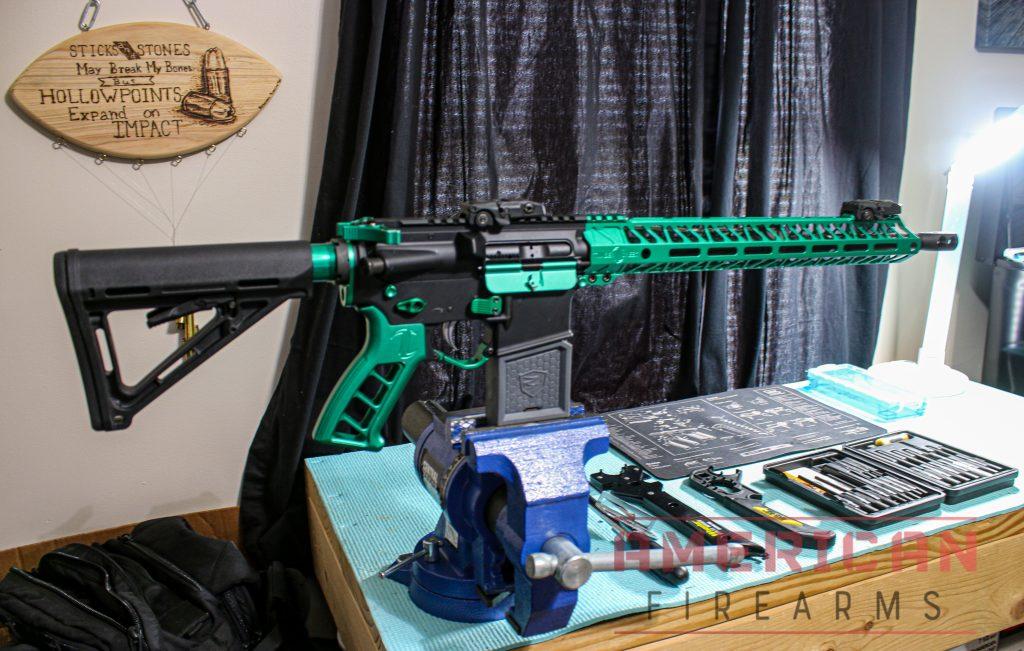
The primary reason for opting for a kit build is that the builder can research and select each part meticulously, optimizing the build for a specific purpose (more on this later).
The result can range from the beautiful to the comical, and span from low-tier budget to super Gucci custom– all with the easy tweak of a handful of parts and components.
Few constructions in the consumer marketplace offer such variety. Additionally, the build process instills the builder with a skillset and knowledge base that takes them far beyond the basic understanding of manipulation or nomenclature and allows them to supervise as much of the production of their gun as they want.
They are responsible for the staking of parts. They are the one who installs every pin and spring in the lower. This makes the satisfaction of producing a working firearm both a personal and fulfilling experience: a journey into ballistic self-improvement, if you will.
1. Purpose-driven
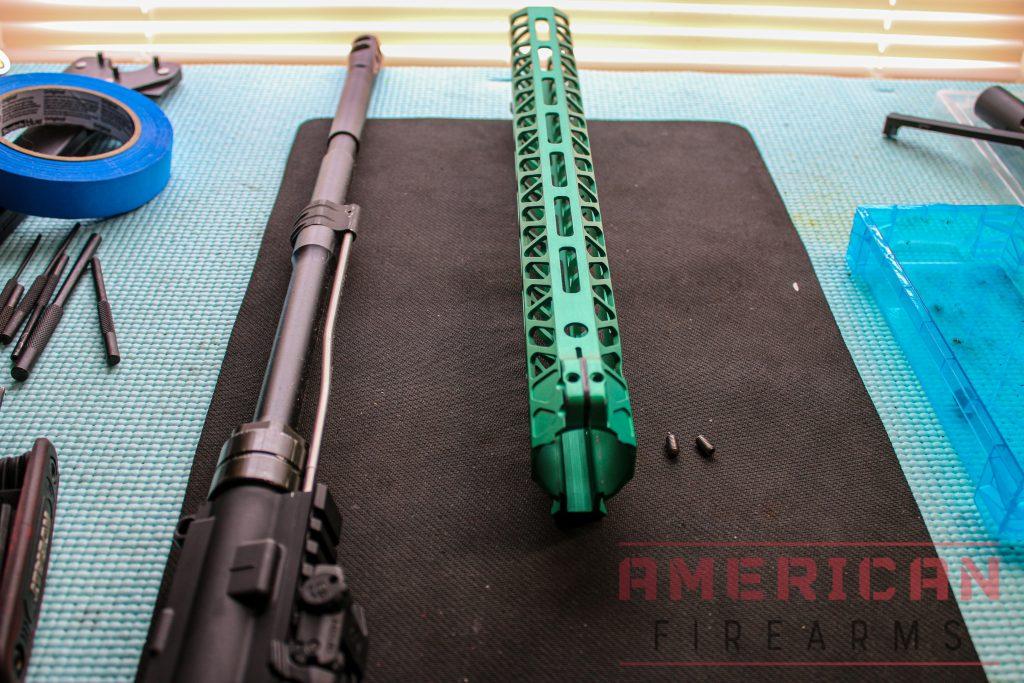
The correct first step in any build is to define a list of expectations for the result once the final lube is added and the gun is function checked. Plan out your build in a road map of sorts by making a build list from the raw receivers to the barrel, LPK, grip, handguard, BCG, muzzle devices, and so forth.
For example, if all I have is a lower, then I’ll need one of the kits that includes everything else. I appreciate the convenience of not having to create a spreadsheet and shop around.
If, on the other hand, all I need is a new trigger, then a more complete kit will leave us with a pile of spare parts, which will either sit in a drawer or inspire us to further empty our wallets on parts to turn our spare parts into another AR.
What kind of optics or sights will you be using? This will point to whether you want an A2, A3, or A4 upper and what kind of top or quad rail system it uses.
Are length and weight a factor? This outlines how long a barrel is and the type of stock used.
2. Overall Value
Second, I think about the overall value involved in a given kit. Triggers are generally sold with a minimum of parts, so those are going to be as cheap as they can get. If, on the other hand, you can find a handguard or stock that you like on a good sale, you might be able to score it cheaper than buying it in a kit and then getting a smaller kit.
It’s always worth looking at a few different options if budget is a major issue for you in building an AR.
2. Component Quality
Third, quality matters. Since we’re saving money by buying a kit, it’s typically a sound investment to buy the best parts that you can.
This is especially true in parts that will get a lot of wear and tear, such as the trigger and magazine release. The last thing you need, especially in a rifle you might use in self-defense, is for the magazine retention spring to break, leaving you with a bullet in the chamber and nothing but a club with which to defend yourself.
3. Barrel Considerations
Do you intend to suppress it? This tells you if you want a threaded muzzle or want to use a QD attachment for the can of your choice.
Will you take it hunting where allowed– check your caliber choice with this– and if so, what kind of load will you use? This can lead to barrel length and twist decisions. If you’re looking for distance performance a 18-inch or longer Valk or Grendel upper might be appropriate, — but if you’re trying to keep your home safe or want a more truck-friendly build something like a .300 Blackout or traditional 5.56 upper would be a better option.
4. BCG Included?
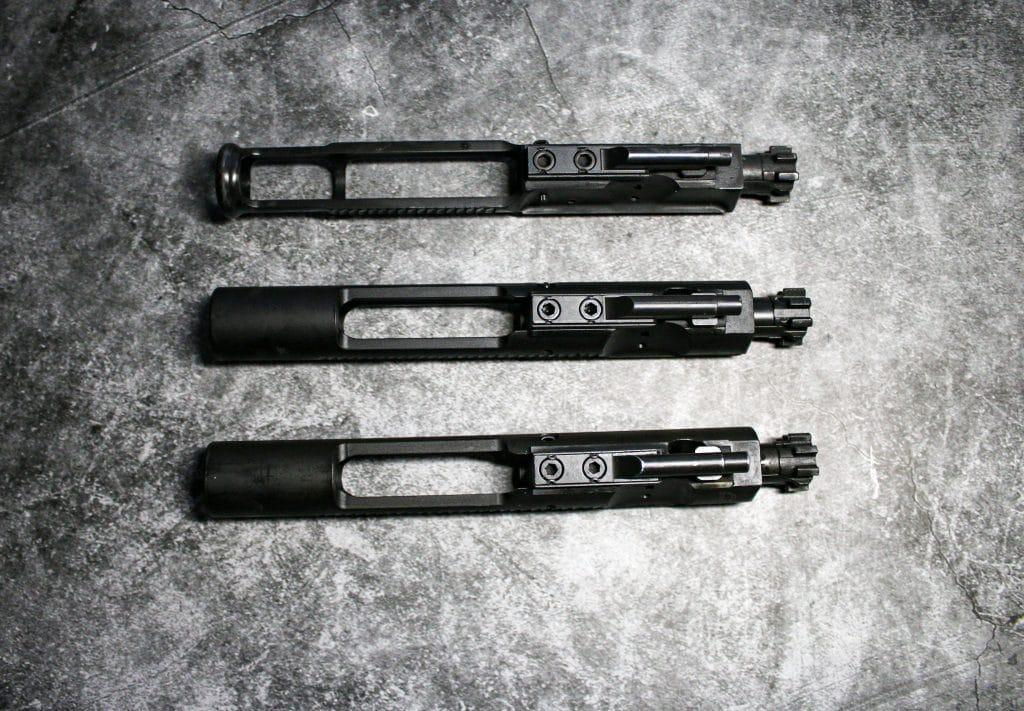
What is the purpose, for instance, will the gun be used sparingly as a range toy or will you stake your life on it in a potentially extended self-defense scenario? This will help you choose the appropriate BCG.
5. Aesthetics
Lastly, kits are a great way to have some say in the aesthetics of your AR. Some triggers, for instance, come in a variety of colors and can be a terrific way to add a pop of color to your rifle without getting a receiver that’s been coated in some wild new finish.
Additionally, the kits that come with furniture allow you to pick the final look of your gun while you’re in the planning process of a build. All in all, these kits are a way to customize an AR precisely to your liking.
Common Mistakes & Considerations
Building an AR-15 isn’t rocket science, but there are definitely some pitfalls that can turn your dream build into a nightmare. Learn from the mistakes of others—it’s cheaper than learning from your own.
The Big Ones That’ll Ruin Your Day
Forgetting the Buffer Detent Spring – This tiny spring holds your buffer in place. Install it before the buffer tube, or you’ll be cursing as you disassemble everything to fix it later.
Over-Torquing the Barrel Nut – More isn’t always better. Follow the manufacturer’s specs (usually 30-80 ft-lbs) or risk damaging threads or creating timing issues with your gas tube.
Wrong Gas System Length – Pairing a carbine gas block with a mid-length gas tube is a recipe for malfunction city. Double-check compatibility before ordering.
Quality Control Issues to Watch Out For
| Problem | Consequence | Prevention |
|---|---|---|
Trigger Guard Pin Too Tight | Cracked receiver | Test fit before hammering |
Pivot Pin Misalignment | Won't close properly | Use proper installation tools |
Gas Block Misalignment | Cycling issues | Check gas tube alignment |
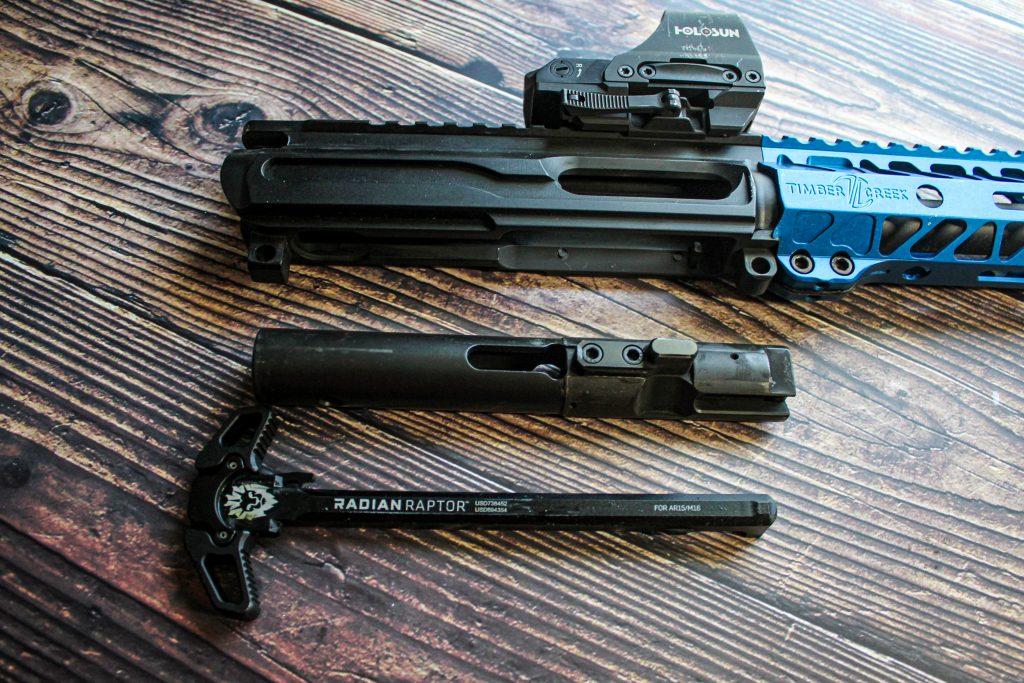
Skipping Function Checks – Don’t just slap it together and head to the range. Test trigger reset, safety function, and bolt operation before loading ammo. A malfunctioning safety selector is more than embarrassing—it’s dangerous.
Buying Incompatible Parts – Just because two parts are both “mil-spec” doesn’t mean they’ll play nice together. Some manufacturers have tighter tolerances that require fitting. Do your homework on compatibility, especially with triggers and receivers.
Rushing the Build – Take your time, especially on your first few builds. Most mistakes happen when you’re rushing or trying to force parts that don’t want to go together. If something feels wrong, stop and figure out why before you break something expensive.
Remember: patience and preparation prevent poor performance. A methodical approach beats brute force every time.
AR Build Kit Pricing
- $50-$100. For about $50, it’s possible to find a reasonably basic lower parts kit that has everything you need to populate the lower, though for that price, don’t expect the world in terms of parts quality. I sometimes recommend these to folks who are building a budget rifle or want some spare parts.
- $100-$200. For about $150, you can get into more complete kits that may well include some furniture, and the sky is more or less the limit as far as what you get in terms of the trigger, handguard, and stock.
- $300 and Above. Over $300, and now you’re talking about the best triggers on the market, including binary triggers that can dramatically affect the rate of fire. The best match-grade triggers will also fall in this price range.
For kits, the pricing largely depends on the quality and the number of parts included.
It’s not apples to apples to compare a simple lower parts kit to something that has everything you need to build a gun. There are a variety of options in all of the different types of uppers to meet the needs of folks’ different budgets and firearm needs.
Ready to Build Your Dream AR-15?
Building your own AR-15 from a kit isn’t just about saving money—though you definitely will. It’s about understanding your rifle inside and out, getting exactly what you want, and having the satisfaction of creating something with your own hands. Plus, there’s nothing quite like the feeling of sending that first round downrange through a rifle you built yourself.
Whether you’re going with a budget-friendly PSA kit to get your feet wet or splurging on a premium setup that’ll make your range buddies jealous, the fundamentals remain the same: take your time, use the right tools, and don’t be afraid to ask questions.
Now that you’ve seen all the corners you can cut by working from a build kit, stop thinking about it and get your next rifle built. Your future self will thank you every time you pull that trigger.
Happy building!
Further Reading (or Watching)
- YouTube, LPK Installation Videos
- Stag Arms Blog, The difference between Gas Piston and Direct Impingement technology for an AR-15
- ATF, ATF Form 1, Application to Make and Register a Firearm
- Gun Trust Guru, Can I Add a Vertical Fore Grip to My AR-15 Pistol?, July 10, 2019
- ATF, If a person has a pistol and an attachable shoulder stock, does this constitute possession of an NFA firearm?
- ATF, Definitions of a Firearm
- ATF, What does “any other weapon” mean?
- ATF, ATF – National Firearms Act Handbook
Updated
June 17, 2025 — Major article restructure with new comprehensive sections including “What Are AR-15 Build Kits,” legal considerations, essential tools, quality guidelines, and common mistakes. Enhanced organization and added practical tables for better readability and user guidance.
Sign up for our newsletter
Get discounts from top brands and our latest reviews!

